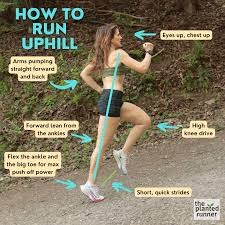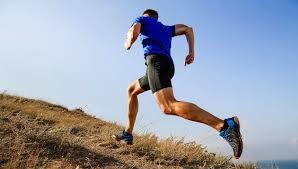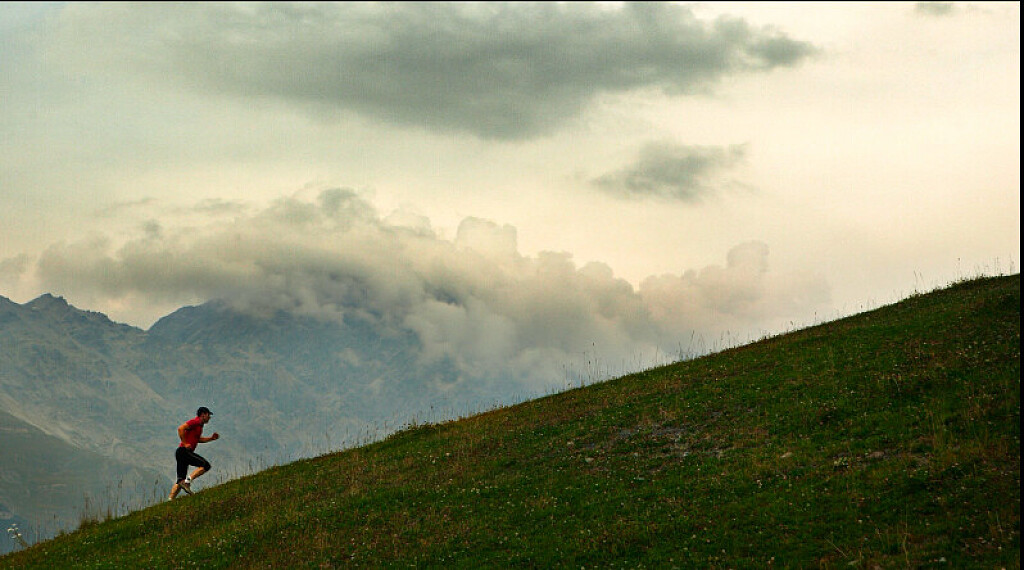Running News Daily
Running News Daily is edited by Bob Anderson in Los Altos California USA and team in Thika Kenya, La Piedad Mexico, Bend Oregon, Chandler Arizona and Monforte da Beira Portugal. Send your news items to bob@mybestruns.com Advertising opportunities available. Train the Kenyan Way at KATA Kenya. (Kenyan Athletics Training Academy) in Thika Kenya. KATA Portugal at Anderson Manor Retreat in central portugal. Learn more about Bob Anderson, MBR publisher and KATA director/owner, take a look at A Long Run the movie covering Bob's 50 race challenge.
Index to Daily Posts · Sign Up For Updates · Run The World Feed
If Running Uphill Feels Like Torture, Make These Expert-Approved Adjustments
Try these expert-approved tips to make running uphill easier and more enjoyable.
I love to run—but I detest running uphill. When I hit an incline, my legs burn, I get acid reflux, and I often need to take a break to catch my breath. Jogging over hills is so terrible for me that I exclusively map out flat routes and sign up for races with minimal elevation, if any.
As it turns out, there’s a legitimate reason people struggle with hills. Every single one of us has a unique running style, or running fingerprint, as John Mercer, a professor of Kinesiology and Nutrition Sciences at the University of Nevada, Las Vegas, calls it.


I, for example, have a long, lanky strut while my husband hops up and down like a kangaroo. When you run uphill, your entire running style changes. Maybe you hunch over or flail your arms or stick your butt out. As a result, you engage different muscles that may not be in tip-top shape, such as your hip flexors, hamstrings, and the muscles that support your knee joints.
This, coupled with the fact that you’re now working against more gravity, is why hills can be so brutal. “Instead of just needing to propel yourself horizontally, you’re also essentially climbing a flight of stairs. So, yeah, it is hard,” says Milica McDowell, a certified exercise physiologist and vice president of operations at Gait Happens.
But hills don’t have to be agonizing. There’s a method to the madness of hill running, and if you go about it correctly, you might end up enjoying it.
According to McDowell, when you jog up a hill, make sure to strike the ground with the middle or ball of your foot, not your heel. A heel-first approach causes you to lean back, she says, which throws off your center of gravity and acts as a breaking mechanism.
This slows you down, making it tougher to get anywhere because you’re breaking every step, McDowell says. Landing on your mid-foot shifts your center of gravity forward, which propels you up and over the mound. “You want to feel like you’re falling up the hill,” she says.
When I’m on a steep section of a trail, I tend to collapse over my torso to suck in more air, but according to Mercer, this move makes the body work even harder. This is proof that gravity is at play. It can feel like you’re carrying an extra four pounds on a slight incline, Mercer says. But a super steep hill? That can feel like an added ten to 20 pounds of extra weight pulling you down.
The key is to lean forward, but not so much that you’re crunching over your stomach. Look ahead, not down at the ground, and keep your shoulders in front of your hips, Mercer says. Lift your ribcage up and out of your pelvis and engage your core by pulling your belly button back to your spine. This will fix your posture, pull back your center of gravity, and make it less torturous to get up the hill, McDowell says.
Uphill running puts more demands on your joints and muscles, per a 2023 research study, so it might feel like your workout suddenly gets more intense when you reach an incline. One trick is to slow down—assuming you’re not in a timed race.
If you try to stick to your normal pace, the metabolic effort needed to climb the hill will dramatically increase. If you often feel winded when you inch over hills, try walking instead. Mercer says this can help you avoid burning out, so you don’t have to bring your entire workout to a screeching halt to recoup for a few minutes. Don’t be fooled—taking it down a notch when going uphill does not mean you’re getting less of a workout. Because trekking up a hill automatically intensifies the activity, your energy output, even if you’re going slower, is more or less the same as it would be running on a flat path.
At the same time, you should pick up your cadence. Trade in the longer steps for shorter, quicker strides. McDowell recommends upping your step cadence by up to 25 percent. So, if you were taking roughly 100 steps a minute, shoot for 125. But keep this in mind: you’re taking more steps, but you want each step to be shorter and cover less distance, so you’re not full-on sprinting uphill. “It’s the turnover rate of your feet that’s faster, not your whole body speed,” she says.
Taking small, swift steps means your feet spend less time on the ground—which decreases impact forces on your knees, hips, and ankles—and helps you run more efficiently, McDowell says.
Anything you can do to propel your body forward will help you get over the hill, which is why McDowell puts her arms to work. She recommends swinging your arms faster and farther out to take some pressure off of your legs.
“Your arms create momentum, and that momentum is part of the gas pedal that pushes you up the hill,” she says. If you can, swing them 25 percent faster than when you’re going downhill or on a flatter path. “It makes a huge difference,” McDowell says.
When you work out, you suck in oxygen, which provides energy to your muscles. The harder you run—à la trotting up a killer mountain—the more oxygen your body needs. “Your body is like, ‘I need more blood in these muscles, I need more oxygen in these tissues’” McDowell says. But you probably aren’t getting the oxygen you need if you’re short of breath.
The fix? Slow down your breathing. McDowell uses a 2:2 breathing pattern where you inhale for a count of two (or about the time it takes you to take two separate foot strikes), then exhale for two. “That’s going to drive down your breathing rate, which will decrease your heart rate, which helps lower stress,” McDowell says, all while increasing the amount of oxygen in your body.
I always get a bad attitude when I see a hill. I think, “This is going to suck,” and then guess what: it does. So, Mercer says that the best thing you can do is have the right mindset.
Research shows that a positive outlook can improve your performance and help you accomplish your fitness goals (including that daunting hill ahead).
According to a study published in 2019, when Olympic and Paralympic athletes were asked, “To what do you attribute your success?” they didn’t reference how toned their legs were or how they built up their glute muscles. They mentioned their positive mindset—how resilient and hungry they were for the competition. Their advice for other athletes? Believe in yourself and embrace the challenge.
Getting over a hill is a mental game. Accept that your pace will change or that the next 10 minutes might be extra tough. But that’s okay—you’ll get through it.
(09/07/2024) Views: 310 ⚡AMPby Outside Online




